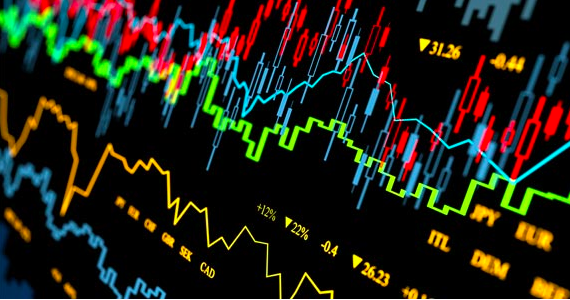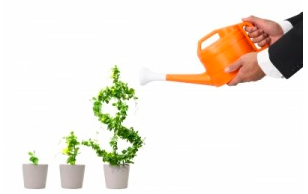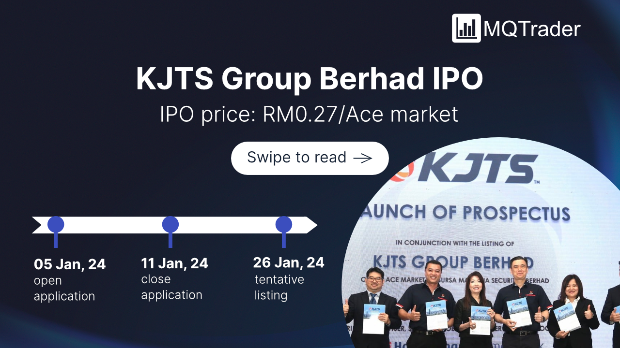Reading The Body Language of Market (Part 2)
SimonShuet
Publish date: Mon, 22 Feb 2016, 10:23 AM
In Part1, we hv covered PE ratio, RSI, and Volume per hour of trades. In Part2, we will rely on those knowledge and enhance the reading of the market. To recap, if you like, you can think of PE ratio as repayment period, an ROI or a loan tenure where by a longer term may not be good. Depending on the industry, accptable PE ratio sits between 8 to 12. Hence the repayment should be optimum base on the business model against the Industry. In short IF PE is 10, you can think of it as 10 yrs to complete repayment or 10 yrs period after which to enjoy the ROI. True to the meaning, however PE does not and cannot factor in loan for expansion as compared to increasing liquidity of the share through means of corporate exercise.

In this sense, Current Share Price to Earning Per Share (PE) ratio is the current earnings period taken to repay at current share price. First thing you would notice is, no reference to debt and the closest factor to debt is the possible interest expense (debt interest) before deriving the earnings/profit for the period. It is therefore for that reason debt gearing in all possible ratio (bond/equity, debt/earning, debt/capital. borrowing/revenue, interest expense/financial income....) is needed to ascertain further standing. All the ratio gives you is an immediate current standing eg all the ratio must be below 1, all the ratio must be as low as possible to be considered healthy position. This is true for BAU (Business As Usual) operation however for expansion situation, this is acceptable BUT MUST correspond to PE in the way whereby IF the gearing is very high (1 or above), and the PE is very low as one of the criteria because a low PE could mean either your EPS is high or the price of your share is undervalued.
EPS is high is easy to derive as a simple relative comparison to previous other quarters will tell while a price of shares being low MUST correspond to a relative position. If that relative position is established, then the low price can be considered as undervalued. For further affirmation many use PB (Price to Book or Market to Book ratio) and PS (Price to Sales ratio) to ascertain the appropriate value. Starting with PB, the lower the value (relative base on industry acceptance) the more undervalued it perceived to be unless bankruptcy is in the horizon for which we have already covered to ascertain the debt gearing. (Note bankruptcy can be reported or happen within the following quarter despite all the due dilligence done on previous quarter) Similarly PS or Market to Sales has the similar mechanism to indicate undervaluation in the same manner.

In the above, it is good to note that some sector/industry, valuation is done frequently and valuation can be ascertain easily. While all efforts to ensure no bankruptcy is in the horizon, (chances are unlikely if you hv done all the FA to minimize the possibility and the managment is a responsible one) and a valuation is derived. Sometimes we wonder why a counter is undervalued but the share price refuse to move forward, this maybe one of the reason. In this case check the gearing always!!
On the other hand, if the debt ratio is glaringly high, in the 0.7 and above band, the share price will surely reflect that. This risk are normally due to large borrowings for expansion that they could not recuperate due to various reason. In many cases, these companies stage a rebound by selling non core asset to get back into the black again and re-consolidate their asset and focus while some also buy into new business to mitigate their risk. In the course of their endeavour, I have seen many turnaround companies however not without much convincing by the management to their shareholders and potential shareholder.

One of the areas of convincing by management to buy the trust of existing shareholder or potential shareholder is how they maintain their "Cash Flow".
Moving ahead on this, whether a turnaround or a performing company, one key area is definitely the cash flow. Here we are looking at postive or negative cash flow and free cash flow. I hv taken the definition of "Cash Flow" from Business Dictionary and Investopedia which I felt best describe what I was thinking.
Positive Cash Flow - Normal situation where the cash inflows during a period are higher than the cash outflows during the same period. Positive cash flow does not necessarily means profit, and is usually due to a careful management of cash inflows and expenditure. Persistent and large positive cash flows may indicate the firm is not keeping enough stocks of raw materials or finished products, and might be losing sales due to shortages. (Source - Businessdictionary)
Negative Cash Flow - Situation where the cash outflows during a period are higher than the cash inflows during the same period. Negative cash flow does not necessarily means loss, and may be due only to a mismatch of expenditure and income. Chronic mismatch, however, may indicate ineffective credit management, leakage of funds through fraud, or actual loss. Temporary mismatch is covered usually by arranging an overdraft facility. (Source - Businessdictionary)
Free cash flow (FCF) is a measure of financial performance calculated as operating cash flow minus capital expenditures. Free cash flow (FCF) represents the cash that a company is able to generate after laying out the money required to maintain or expand its asset base. Free cash flow is important because it allows a company to pursue opportunities that enhance shareholder value. Without cash, it's tough to develop new products, make acquisitions, pay dividends and reduce debt. FCF is calculated as: EBIT(1-Tax Rate) + Depreciation & Amortization (Source - Investopedia)

The "Cash Flow" is one area which Investors will use to determine whether the management of the company they are investing in is prudent with good vision, are focus & responsible and their ability to grow their business taking on large/larger expansion or whether the company's endeavour to stage a turnaround and rebuild their financial stature will likely succeed.
So in short, when we look at an undervalued stock with seemingly good fundamentals, it is essential to also look at their management ability and cash flow to sustain growth. Hence the next time when someone is calling a buy on an undervalued stock, do a due dilligence on gearing, expenditure and expansion plan against the management consistency to deliver. After all, business and sales growth are the key aspect of financial reporting.
More articles on Rules of Investment
Created by SimonShuet | Feb 08, 2016
Created by SimonShuet | Jan 27, 2016
Discussions
The indicators yesterday has been bearish in terms of loser vs gainers towards the end of the day with more losers. This is not to say that the market is bearish. As the previous day and last week has been on a very bullish sentiment on KLCI however my opinion is it must break 1692 and move towards 1700 or straight of pass 1700 for more meaningful uptrend.
At one point, the gainer, loser and unchanged were very close in the 300+ region each. Approx 30% distribution each amongst them compared to earlier in the day where Gainers was leading in 62% region vs loser. While Gainers lost ground, the KLCI maintained for a while before dropping below 1680. It indicated some buechip maintaining the market momentarily as penny stocks were losing ground.
Having said market wants to recover, market also need new catalyst to move forward. The old news have been absorbed within the 3 day rule and now need more to refuel.
One of the headline I read this morning was "Oil slumps 4% as Saudi Arabia reaffirms no output cut" dated today however checking on the crude oil price is still above USD30 and the ringgit is weakening again. There are 2 sentiments here, the market sentiment and the personal sentiment. On the personal sentiment we may be happy to hear oil is still weak as that will be the only gain for consumers at the pump here with all other things being in inflation. On the market perspective, it will mean a few other things. For one those nett exporter of oil will produce even more to ensure that their income remains as we do not know when this will end. As they do that, they will also contribute to the output volume. Now supply is much higher than demand. I only wonder now if anyone will hedge oil especially when it hit USD25. The reason being avgly oil production is maintained low at USD25-30 and USD 30-35 for those with a lot offshore. Hedging here will make sense as production cost is higher than output price and play it like forex since any lower than USD25 most will call it a day. If hedging is in progress, this means that the buyer without much overlay of asset like those doing the refinery and rigging will acquire straight into their reserved. As mentioned we do not know how long this price will stay, the buyer will acquire slowly without increasing the demand.
A quick check of Top Oil producing countries will see in ranking US, followed by Saudi Arabia, Russia, China and Canada. Of this only one OPEC while majority OPEC only come in 6th position onwards. US is a nett importer of oil however that may not mean they will gain simply because it depends on export grade vs import grade. Eg Malaysia exports Grade A but import lower grade into the country. We may still lose. Hence if US being nett importer starts hedging, will the US dollar go up or down? Remember the law of supply and demand? Too much supply the price will go down. So here if US or any other countries starts hedging and collecting without affecting the demand oil price will still continue to stay low while the USD will get stronger? Agree?
2016-02-24 09:07
Boss Simon, your thinking so complex. Thanks ya. If USD streghtens because silent buying, and when crude oil go back up, how? US will have hong bao again
2016-02-24 09:53
Biochips Market is expected to grow at the CAGR of 17.23% during 2015-2022
http://www.briskinsights.com/report/global-biochips-market-forecast-2015-2022
2016-02-25 00:09
Passing 1692 is a good break. I am expecting it to pass 1700 as share above however the Gainer vs Loser must pass the 56% mark to at least 62%. If that happens, the break above 1700 is stronger.
2016-03-03 10:43






















Kjsiah
Thanks for the patience in teaching
2016-02-22 11:27